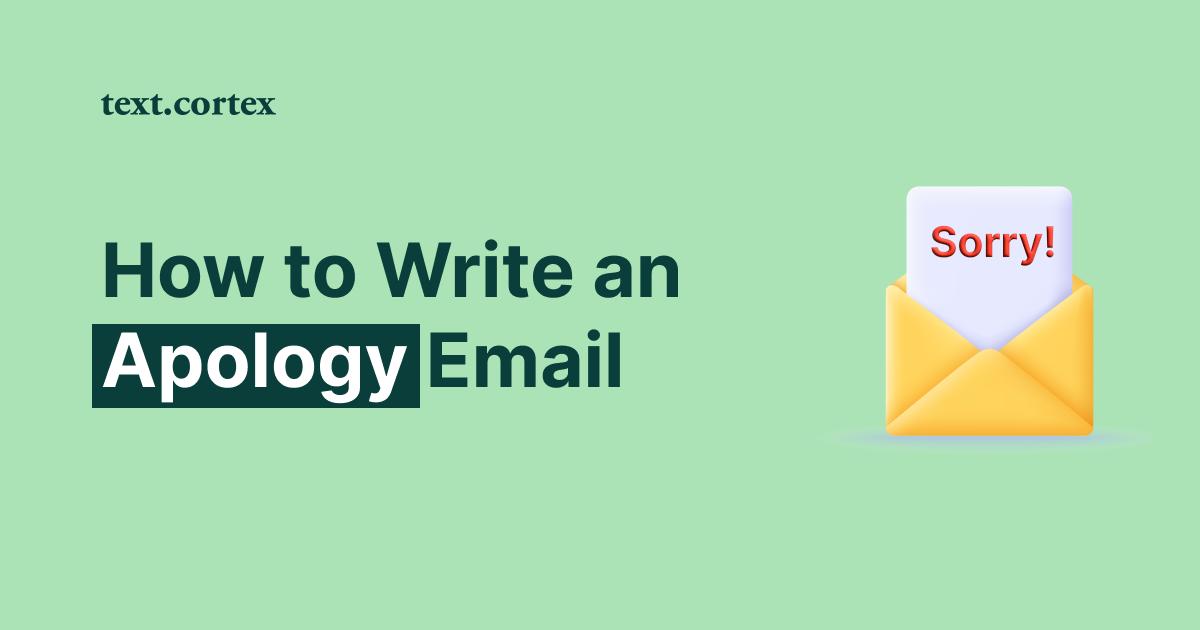According to Statista research, in 2022 people across the Globe received approximately 333.2 billion emails every day.
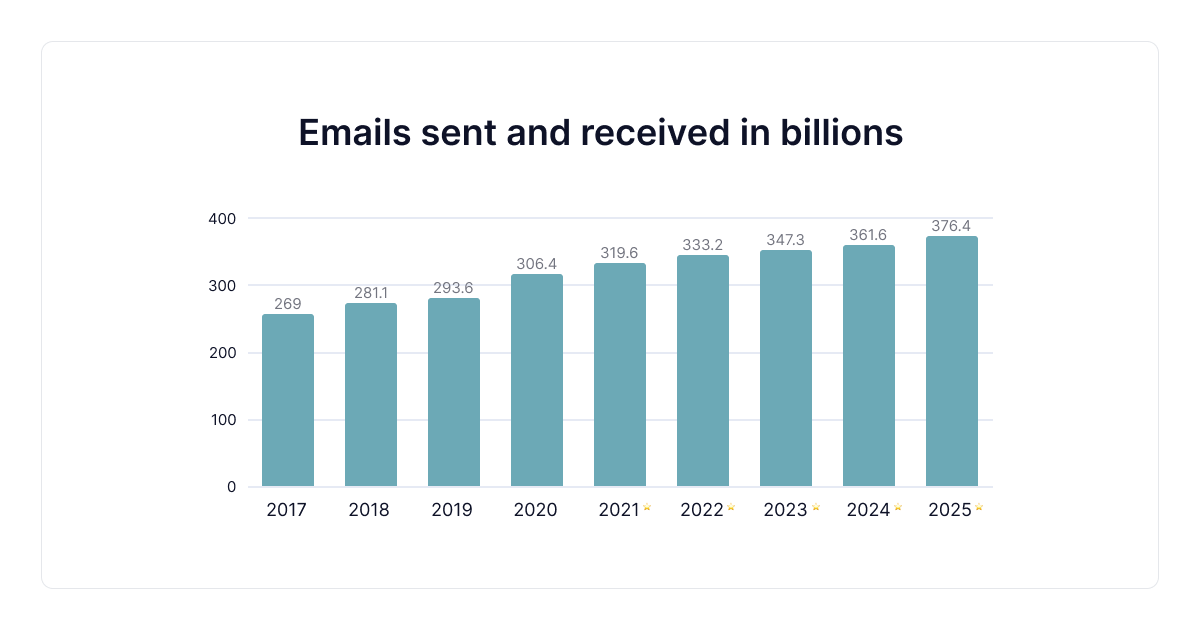
With this in mind, you realize how hard it is to write emails that are attractive enough for the recipient to open them.
Of course, an opened email is the first step towards your goal of the reader reacting to it.
We know your struggles in writing emails that complete all goals you set before sending them.
In today’s article, we offer effective steps on how to write a persuasive email to help you achieve the best results in your email campaigns.
Let’s start.
What are Persuasive Emails, and What Makes Them Effective
Emails with the goal of convincing the recipient to do something or see things in a certain light are considered persuasive emails.
At this point, you probably commented, “Awwww, well, I have sent mountains of emails like that.”
The question remains: how successful and persuasive are your emails?
How to Spot Email With a High Chance of Achieving Its Goal Before Sending
Next time you start writing persuasive emails, take a moment and compare similar emails you have sent before.
In that comparison, look for answers to the questions we listed below:
- Subject lines - are they interesting enough to open an email
- Goal - does the reader relates to the problem or solution presented
- Proof - have you provided strong proof for your claim
- CTA - does your email persuade users enough to click somewhere
Your emails with the highest level of success answered most, if not all, questions with resounding YES.
Further down in the article, we will provide effective steps for writing a persuasive email and why those steps work in real life.
Let’s dive into it.
How to Make Your Persuasive Emails The Main Force of Your Marketing
Before we get into the learning process of how to write persuasive emails, let’s get to the reason behind all of it and what you should put in the effort to make your writing better.
Did you know that emails bring the highest ROI(return on investment) as a marketing technique in the industry?
As provided in research, for every $1 a company spends on email marketing, the revenue they receive is $40, which is higher even than the SEO marketing results of $22.
Sounds attractive enough to put more effort into it, right?
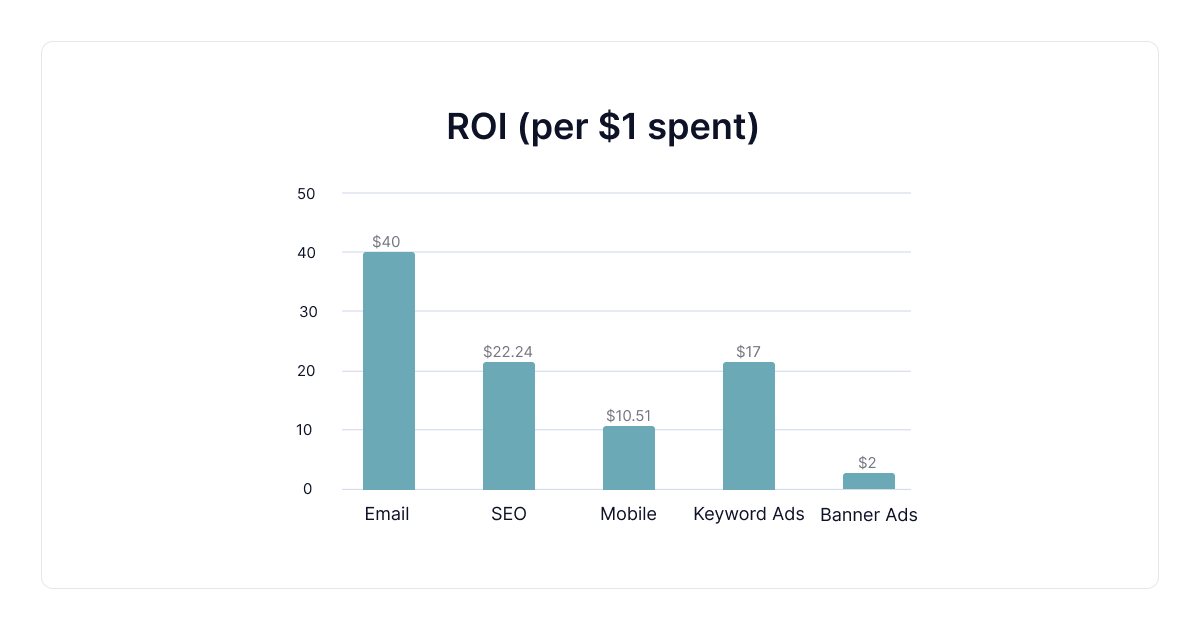
Now that we know how we can benefit from email marketing and our drive to reach those numbers is at its peak, we can start learning.
1. Know Who Is Reading Your Email
We will admit that knowing your readers is not advice on how to make your writing better, but it is the seed from which all other steps are growing.
So, if you invest in researching your audience, it is actually an investment in all other aspects of your marketing.
Why It Works:
You can predict people’s actions and desires from previous actions.
How To Use It:
Once you understand how people look at problems they are facing on a daily basis, you can create buyer persona and play out scenarios to see how they will respond to your actions.
2. Create a Subject Line That Is Actionable and Noticeable
The first task your email must complete is to motivate the recipient to open emails and start reading them.

Why It Works:
With an ever-growing number of emails received, people tend to quickly scan subject lines without actually reading them all the way.
Once your email is noticed, the subject line should motivate the recipient to open it, and an invitation to a better place is an excellent tool for invoicing such a reaction.
How To Use It:
If you use phrases indicating that time is of the essence, a possibility for profit, or even use emojis in the subject line, your emails will draw attention.
Your subject line should present an invitation to engage and enjoy benefits accessible only if they open the email.
3. Strengthen Your Writing With Evidence and Examples
As time passes, people have less and less trust in empty claims made in marketing campaigns, and a lack of trust in brands leads to poor sales performance.
On the other hand, if you back your claims with evidence, their impact is much more profound.
Why It Works:
If you make a statement about your product or service and back such a statement with clear evidence, you may change hesitance to trust when the reader thinks of your product or company.
How To Use It:
Evidence you present with the greatest impact comes from a well-established name in the industry(but not yours no matter how dominant your company is).
Whenever you can call on readers’ previous actions or statements that align with what you are offering as proof, your solution is the right one.
4. Use Social Proof
People tend to make decisions based on what other people do because they think that action is the correct one. This drive is especially strong if people have similar histories.
We separated social proof from the rest of them because it can stand on its own as a statement and evidence.
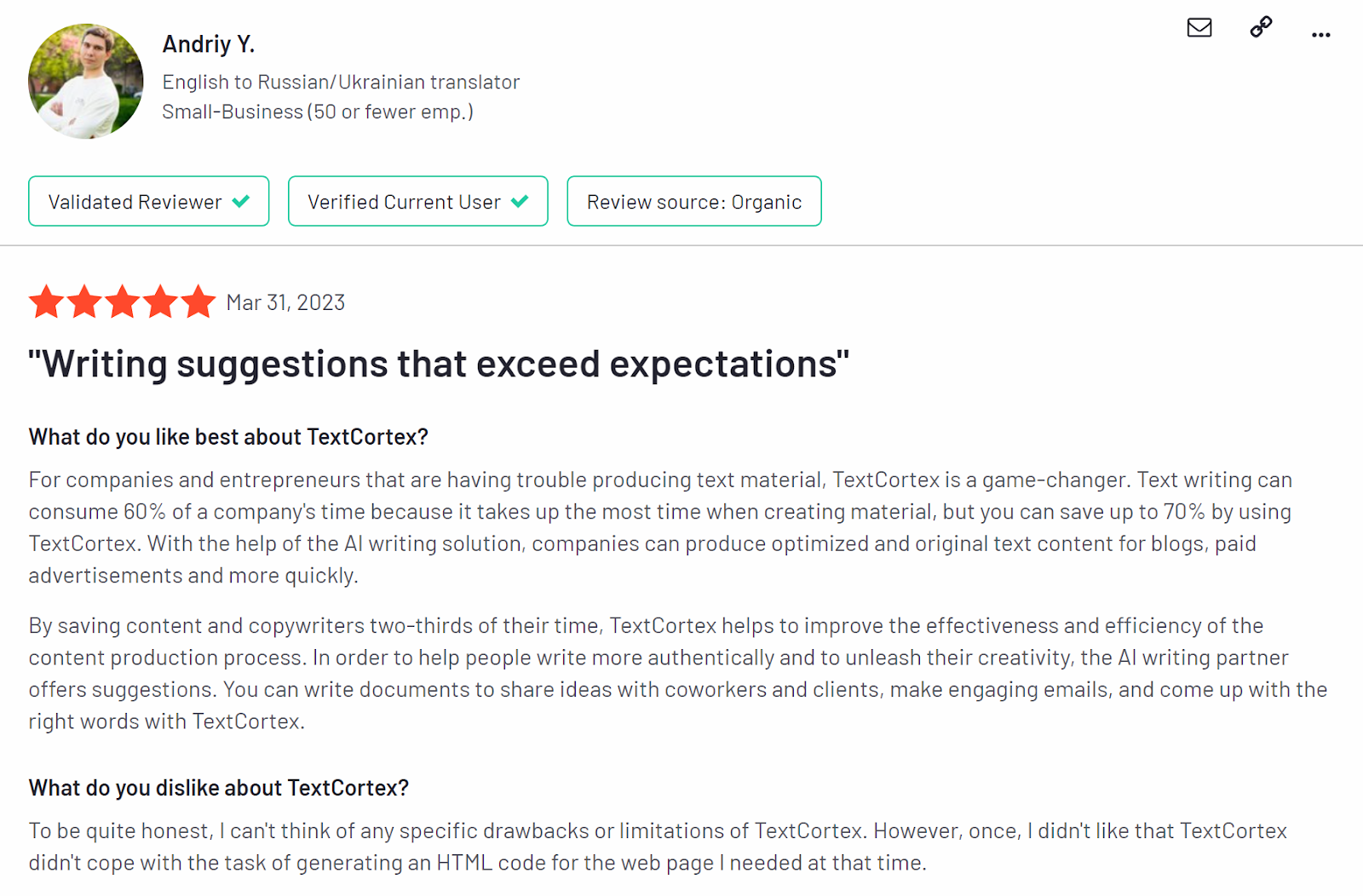
Why It Works:
A major benefit of social proof is that, in a short span, it can raise and prove the point you want to deliver.
How To Use It:
You can leverage the positive experience of your more or less famous partners.
On the other hand, you can use indirect social proof, like casually mentioning a “large number” of satisfied customers.
5. Point Out a Problem And Offer a Solution
Complacency in the face of problems is one of the most common mistakes people make when running companies.
Fear of making mistakes can force leaders to run businesses in the same old fashion even when problems are apparent.
Why It Works:
People get a sense of urgency to resolve a problem once someone else notices it exists, even when they are aware of the issue for some time.
Such emotions are a strong driving factor.
How To Use It:
The sense of urgency we talked about does not indicate people will jump to your solution.
Emotions are in play so address them carefully.
When you talk about problems from the perspective best suits the readers, they can appreciate your interest and expertise.
6. Answer The Question, “Why should I?”
A well-known social study shows that if you make an easy request, people will say yes 60% of the time.
It’s nice to know that there are still more good people than bad ones.
The same study also found that a shocking 93% of people say yes if you give them a reason after the question.
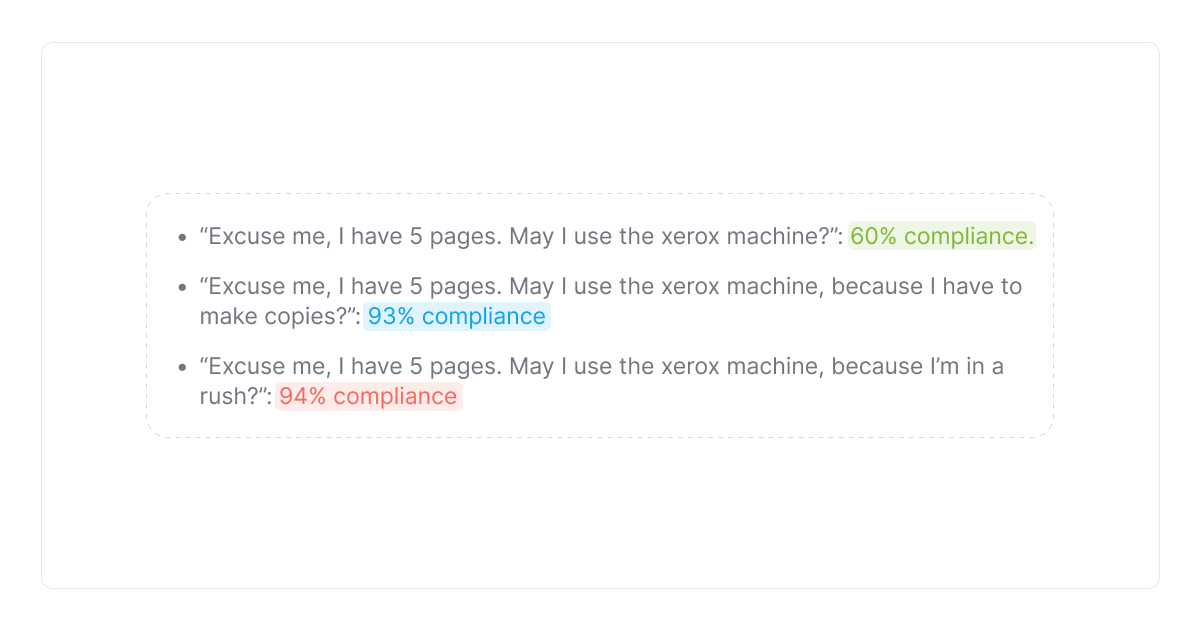
Why It Works:
When you provide the reason related to the question, it puts people in a position to try to think of a stronger reason to refuse your request.
And as we saw in research, they are not good at finding one
How To Use It:
When you present the reader with a dilemma to act on your email with clearly stated benefit for them, it is hard to find a reason to skip such a deal.
7. Do Not Force, Guide Instead
Nobody likes when someone forces them to do something, even if it is for their benefit.
Any time you are in the business surrounding, you should balance your behavior between:
- Assertive to show confidence and expertise
- Compliant to allow prospect space to decide on their own
Why It Works:
Trust is attractive to any group of people. Offering guidance but leaving it to the recipient to decide when to accept it is a sure way to build such trust, especially in business.
How To Use It:
A study published in 2013 shows that emails containing phrases like “decision is yours” have 50% higher chances of positive response.
It is a well-known fact that follow-up emails are an impressive tool to increase responses and engagement but pay attention, too many of those emails can backfire in a second.
8. Start Small
The task of building trust with people you do not communicate with on a daily basis is a tough job but not an impossible one.
Love, at first sight, doesn’t exist in today’s business, this means you need to build trust starting from communication with no obligations and move to partnerships.
Why It Works:
Everyone in the business world likes big contracts that tie partners on long-term contracts. Unfortunately, that kind of trust takes time and effort from both sides.
How To Use It:
Whenever you can start with a small requisite like completing a short pole does not indicate any future obligations and does not cost any money to complete.
In addition, asking for a person’s opinion on relevant subjects can help start conversations.
9. Make Request Clear and Easy To Complete
The whole reason for email marketing is to lead readers to complete a specific task, with this in mind, you are creating a story with a single focus point.
Reader clicking on your call to action.
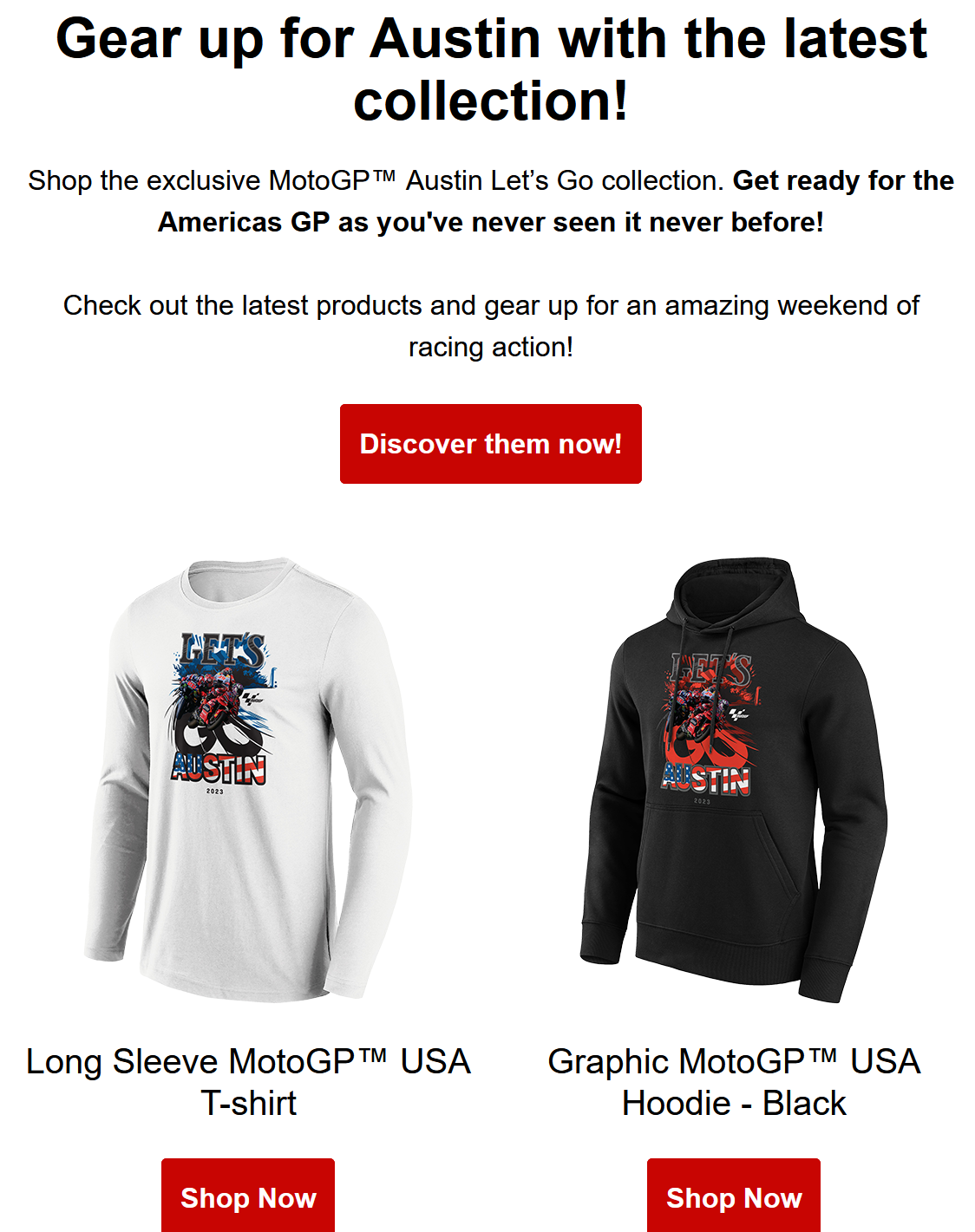
Why It Works:
An open approach with clearly stated intentions reduces the possibilities for misunderstanding, but it also shows you are looking for an honest partnership.
How To Use It:
Clear and simple language is your best friend when you want to make sure a person knows what you ask of them.
For instance, a clear call to action pointing to a highlighted link avoids confusion. Also, reducing the effort needed on the readers’ part increases the chances of positive responses.
Using TextCortex To Jump-Start Your Persuasive Email Campaigns
How to write a persuasive email?
You probably have unique ideas, but are struggling to convert them into effective emails.
ZenoChat combines natural language processing and AI to process your input simply and helps you produce persuasive emails with your idea as the backbone.
You can rely on TextCortex to boost your creativity in writing with many high-value features like: paraphrasing, text-to-speech, auto-completing, expanding, and more.
TextCortex’s Chrome extension allows you to focus on the quality of your writing with the following:
🙌 One app taking off 70% of your writing.
🙌 Support on 2000+ online platforms with the option to use AI writing, rewriting, and editing.
🙌 60+ templates in the textbox are more than enough to write anything you wish.
🙌 Change Tone feature allow you to adjust the tone in your email
Are you not sure you can afford it? Yes, you can since you can start using TextCortex for free.
10 credits per day with the Freemium plan are enough for a start, and in addition, there is the option to enhance with our rewarding programs.
Sign up today and start drafting the best persuasive emails today.
.jpg)
![9 Effective Steps To Write Persuasive Emails [Beginners Guide]](https://textcortex.com/cdn-cgi/image/format=avif,quality=90/https://assets-global.website-files.com/622611a2b23d0e6b270fba81/643126336529ac136df4000f_Frame%201000003906.png)
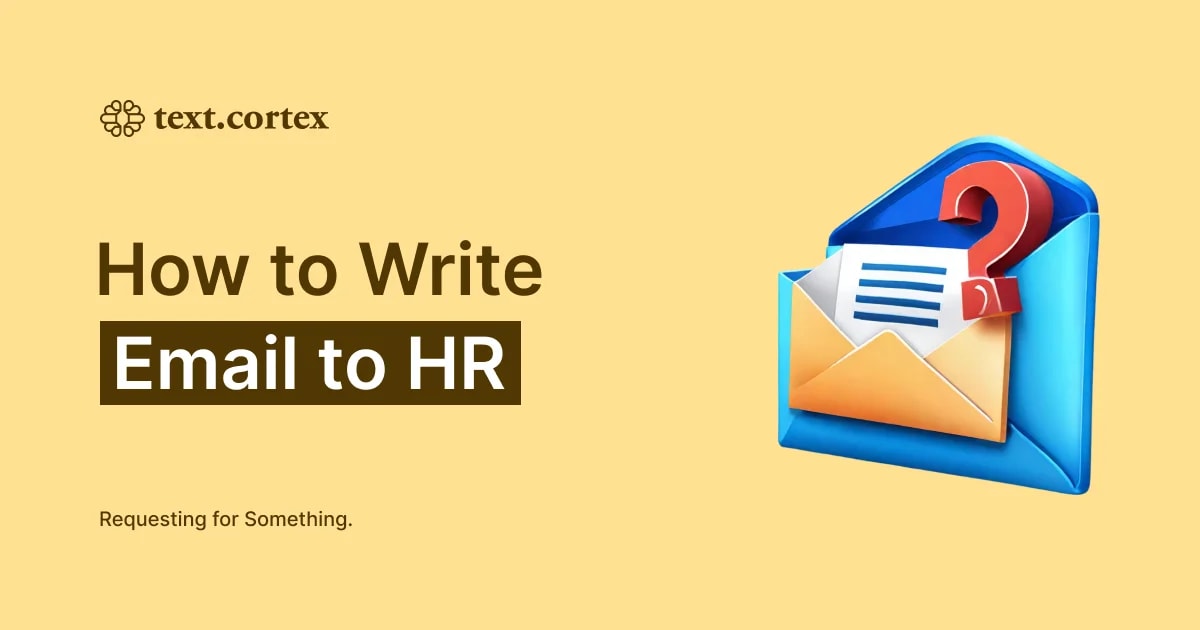

.png)
